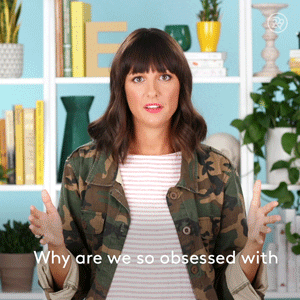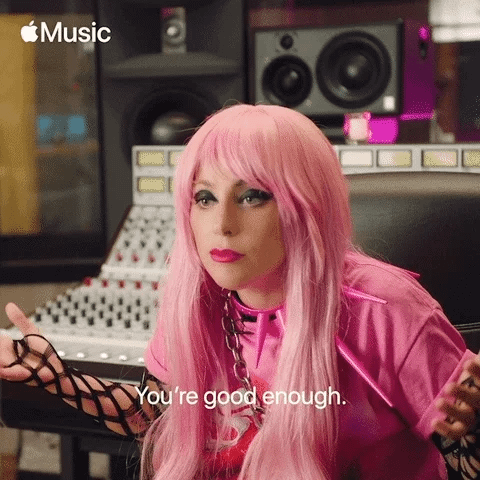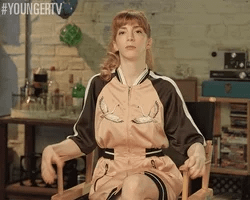Burnout isn't a workload problem, it's a worthiness one
An Overthinker's Guide to Burnout PART 2: Five things that fuel burnout (hint: it's not just your workload)
Burnout doesn’t just come from doing too much.
It’s what happens when we’re overextended, under-supported, and carrying expectations that don't align with our capacity or values.
It comes from systems, stories and internal beliefs that tell us we should always be doing more and doing it perfectly.
It can look like chronic exhaustion, brain fog, low motivation, irritability or detachment. But underneath that, it’s often powered by deep, systemic and personal forces.
In Part 1, we explored what burnout looks like and how to recognise the signs in yourself and now in this post, we’re going deeper.
If we want to recover from burnout and avoid falling straight back into it, then we need to understand what’s fuelling the fire.
This post will walk you through five of the most common (and often hidden) causes of burnout for adult learners, high-achievers and recovering perfectionists, with reflective prompts and support strategies for each.
1. Educational Trauma
Educational trauma refers to the lasting emotional wounds caused by shaming, unsafe or invalidating learning experiences. While the term may sound intense, it describes something many people (especially gifted, neurodivergent or sensitive learners) have experienced without realising it.
This kind of trauma doesn’t always come from extreme situations. It can be quiet and cumulative, made up of small, repeated moments where your needs weren’t met or your feelings weren’t safe.
You might have:
Been praised for being “smart” or “clever” but never shown how to handle failure or confusion
Frozen when asked to read out loud in class and been laughed at or ignored
Struggled in silence because you didn’t want to seem “stupid”
Felt pressure to “know it all” before starting or to meet adults’ expectations
Had a teacher who humiliated or embarrassed you
Been told “you’ll be fine” or “you don’t need help” because you were seen as “capable”, even when you were overwhelmed
These moments teach us that our value is tied to performance and that struggle is something to be ashamed of.
So when we return to learning as adults, whether it's for an exam, a new language or career training, those same feelings can re-emerge. Sitting down to study might bring up anxiety, shame or panic. Asking for help might feel impossible. Making a mistake might send you into a spiral of self-doubt.
It’s not just about the task in front of you, it’s about the emotional weight behind it.
This isn’t about being dramatic. It’s about recognising that your nervous system is trying to protect you from situations that once felt unsafe.
And recognising that, is where healing can begin.
✨Reflect:
What did you learn about failure, mistakes or asking for help?
How did the adults in your life respond when you struggled or succeeded?
🛠 Try:
Choosing one small thing where you can let yourself be imperfect and practice staying kind in the discomfort e.g. sharing an unfinished piece of work, leave mistakes in your notes, send an email reply without over-editing.
🎨 Create:
Draw or imagine your ‘little learner’: What age is this part of you? How is ti feeling? What does it need to feel safe now?
Write a letter from your compassionate adult self to the child who felt pressure to be perfect or who quietly struggled without support. What would you say to them?
2. Capitalism and Productivity Culture
Burnout is not just an individual issue, it’s also systemic.
Capitalism and productivity culture push the narrative that your worth is tied to your output. We’re taught to measure success by how much we do, how efficiently we do it and how visible our productivity is.
Rest is framed as something to “earn”. Leisure must have a purpose. Even wellbeing is often hijacked by hustle culture (tracking your steps, your meals, your habits). And God forbid we have a hobby that we don’t try to monetise!
Capitalism makes us feel like we’re behind. That we need to do more. That we are only valuable when we are useful.
Burnout becomes almost inevitable in a culture that doesn’t respect human limits.
✨ Reflect:
Where in your life do you feel the need to prove your worth through productivity?
What would change if you believed you were already enough?
🛠 Try:
Protecting your rest with boundaries. Choose one hour a week where you don’t allow productivity talk or tasks. Sit quietly, listen to music, read a book.
Experimenting with rest as resistance. Rest for the sake of rest.
🎨 Create:
A “rest vision board”: images, textures and words that evoke ease, softness and spaciousness.
A “slow living jar” with folded notes with slow and restful activities: “watch the clouds”, “make tea slowly”, “walk without a goal.”
3. The Perfectionist Myth
Perfectionism often looks like responsibility, motivation or high standards on the outside. But underneath, it’s usually driven by fear.
Fear of failure and fear of being judged.
Fear of being “found out”.
Fear that if we stop achieving, we’ll lose our worth and value.
At its core, perfectionism isn’t really about being perfect. It’s about trying to earn safety, acceptance or love by performing well enough.
Perfectionism says: “If I just try harder, get everything right and never mess up then I’ll be safe. Then I’ll be loved. Then I’ll be enough.”
It often starts young, especially for children who were praised for being clever, compliant or talented. When achievement becomes the pathway to praise, it also becomes the condition for feeling “good enough.”
And so we learn:
“If I always do well, I’ll be okay. If I make a mistake, I won’t be.”
But it’s a myth. Because perfection is unattainable and trying to reach it leads to overwork, anxiety and eventual collapse. This belief system grows up with us. In adulthood, perfectionism can look like:
Over-preparing, over-researching, over-delivering
Putting off tasks because they can’t be done “perfectly”
Feeling ashamed of even small mistakes
Struggling to celebrate achievements (because you only see what could’ve been better)
Never feeling finished, satisfied or relaxed
Perfectionism is protective. It’s a part of us that learned we needed to be exceptional to be safe. But it comes at a cost; constant tension, chronic self-monitoring and eventually, burnout.
Perfectionism doesn’t prevent burnout. It fuels it, because rest and imperfection feel unsafe when your worth depends on how well you perform.
That’s why recovery isn’t about “lowering your standards.” It’s about uncoupling your self-worth from your outcomes. Learning that you are still whole, still worthy, still lovable. Even when things are messy, unfinished, imperfect or human.
✨ Reflect:
What are you afraid might happen if you didn’t try so hard to get things “just right”?
What would it feel like to believe that being enough doesn’t require being exceptional?
🛠 Try:
Noticing your inner critic. When it shows up, try replying gently: “I hear you but I don’t have to do it perfectly to be okay”.
Creating a “soft success” list- things you’ve done imperfectly, but that still moved you forward.
🎨 Create:
“Make bad art on purpose.” Let go of the outcome. Make something intentionally messy, silly or incomplete. See what it brings up. I love drawing with my left hand or setting a timer for 5 minutes because it gives me permission for the outcome to not be “good!”
Draw or imagine your perfectionist part. What does it look like? What’s it protecting you from? What would help it feel safe enough to loosen its grip?
4. Unrealistic Expectations (and “Shoulds”)
Burnout isn’t always about how much you’re actually doing.
Sometimes, it’s about how much you think you should be doing.
“I should be further ahead”
“I should be more organised”
“I should be able to cope like everyone else”
“I should be better at this by now”
These shoulds might sound like motivation. But they often come from a deeper place: internalised pressure and unspoken rules about what it means to be ‘good enough’.
And when you believe you should be doing more, going faster or being better than you actually can, you’re setting yourself up for chronic guilt, stress and self-blame. Even if you’re doing an incredible job by any objective measure.
“Shoulding” is tightly woven into perfectionism.
You should do it better. You should have known.
You should be able to manage without needing support.
But now we know that perfectionism isn’t just about being perfect. It’s about trying to avoid criticism, shame and disappointment, often at the cost of your wellbeing.
The more we “should” ourselves, the more we abandon what we actually need in favour of who we think we’re supposed to be.
Many of us pick up “shoulds” early in life, especially if we were the high-achieving, dependable or emotionally attuned child.
You might have been:
Praised for being mature beyond your years
Encouraged to be self-sufficient or emotionally low-maintenance
Left to cope on your own because you were “so capable”
Rewarded for achievement, but not for effort or rest
In this context, “should” becomes the voice of internalised expectation. It's the whisper that says: “You’re only doing well if you’re doing it all.”
And when you try to live by those rules, burnout isn’t a possibility, it’s a certainty.
✨ Reflect:
What “shoulds” are quietly running your life right now?
What would change if you replaced “should” with “could” or “want to”?
🛠 Try:
Reframing your “shoulds” as “coulds”. Every time you hear yourself think “I should…” notice what it feels like to ease off the pressure and bring in some flexibility by giving yourself the option of “could”.
Choose one “should” to let go of this week. Replace it with something softer, like “It’s okay if I…” or “What I actually need is...”
🎨 Create:
Write a letter to yourself that starts with: “You don’t have to...” and let it flow. Don’t edit. You might end with: “What you actually need is...” Use this to create a kind of permission slip.
Actually make yourself a permission slip! Choose a “should” that you want to let go of and write yourself a permission slip to do something else instead e.g. Permission to be imperfect or to make mistakes.
5. Disconnected Values
Burnout can also come from living a life that’s out of alignment with what matters most to you.
You might be doing what’s expected, what looks good on paper or what pays the bills (all those things we feel we “should” be doing…) but if this doesn’t feel meaningful, it quietly wears you down.
When your outer life and inner values don’t match, burnout creeps in through that disconnect.
Sometimes recovery isn’t about doing less. It’s about doing more of what’s aligned.
✨ Reflect:
What do I deeply care about and where am I making space for that?
Where have I said yes to things that don’t align with who I am?
🛠 Try this:
Write down your top 3 core values. What’s one small way you could honour them this week? Try this interactive online activity to work out what your core values are if you’re not sure.
Practice saying no (or “not now”) to something that feels misaligned. Start small by saying you’ll call someone back or that you’ll let them know, instead of immediately agreeing.
🎨 Create:
Draw a values mandala: place a core value in the centre and build out with colours, shapes or words that support it.
Make a vision board for alignment: visuals or words that remind you what truly matters to you.
In summary
Burnout isn’t just about your workload.
It’s about what you believe you have to carry and why.
Understanding the hidden drivers of burnout gives you a new kind of power. The power to step back. To soften. To choose differently.
This is not about perfection. It’s about permission; to go slower, to do less. To take a break from the systems and beliefs keeping you stuck in the cycle of hustle and productivity.
Remember:
Rest is Radical. Rest is Resistance.
Coming in Part 3:
In Part 3, we’ll explore what healing from burnout looks like. From nervous system support to boundaries, to rest and reconnecting with who you are underneath the pressure.
Until then, be kind to yourself,
Amy x
Hi I’m Amy! Seasons Change is a kind and supportive place for exhausted and anxious overthinkers. Learn how to trade self-criticism for self-compassion, productivity for presence and shame for self-acceptance. Here, we weave therapeutic insight and creativity with slow and seasonal living, to build self-trust for a calmer, more fulfilled life!












